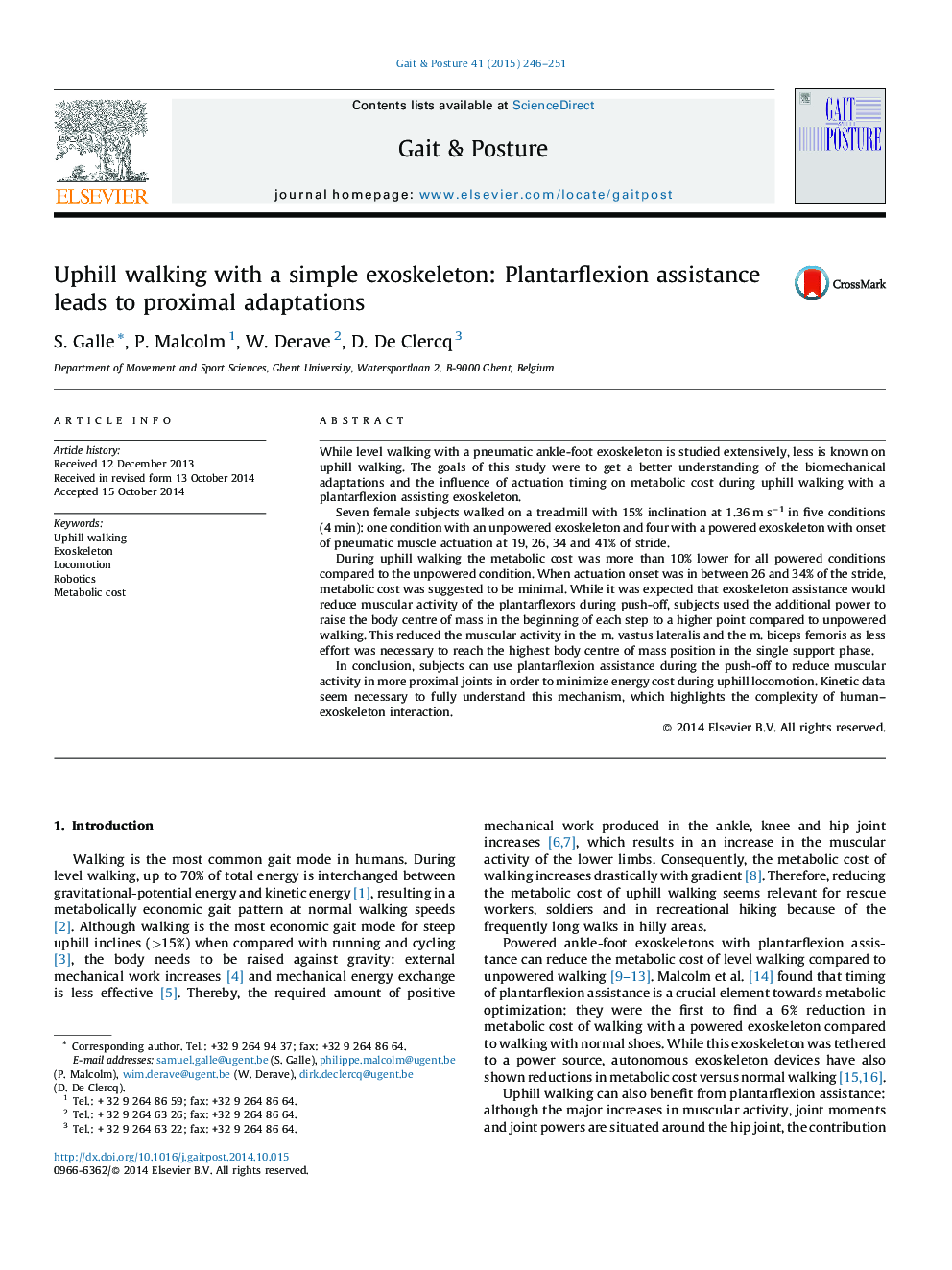| Article ID | Journal | Published Year | Pages | File Type |
|---|---|---|---|---|
| 6205726 | Gait & Posture | 2015 | 6 Pages |
â¢Powered ankle exoskeletons can reduce the metabolic cost of uphill walking compared to unpowered walking.â¢Plantarflexion assistance does not reduce muscular activity of the plantarflexors in uphill walking.â¢Plantarflexion power is used to increase body centre of mass position in uphill walking.â¢Plantarflexion power reduces muscular activity in thigh muscles in uphill walking.
While level walking with a pneumatic ankle-foot exoskeleton is studied extensively, less is known on uphill walking. The goals of this study were to get a better understanding of the biomechanical adaptations and the influence of actuation timing on metabolic cost during uphill walking with a plantarflexion assisting exoskeleton.Seven female subjects walked on a treadmill with 15% inclination at 1.36 m sâ1 in five conditions (4 min): one condition with an unpowered exoskeleton and four with a powered exoskeleton with onset of pneumatic muscle actuation at 19, 26, 34 and 41% of stride.During uphill walking the metabolic cost was more than 10% lower for all powered conditions compared to the unpowered condition. When actuation onset was in between 26 and 34% of the stride, metabolic cost was suggested to be minimal. While it was expected that exoskeleton assistance would reduce muscular activity of the plantarflexors during push-off, subjects used the additional power to raise the body centre of mass in the beginning of each step to a higher point compared to unpowered walking. This reduced the muscular activity in the m. vastus lateralis and the m. biceps femoris as less effort was necessary to reach the highest body centre of mass position in the single support phase.In conclusion, subjects can use plantarflexion assistance during the push-off to reduce muscular activity in more proximal joints in order to minimize energy cost during uphill locomotion. Kinetic data seem necessary to fully understand this mechanism, which highlights the complexity of human-exoskeleton interaction.
